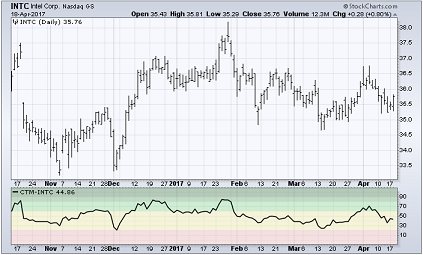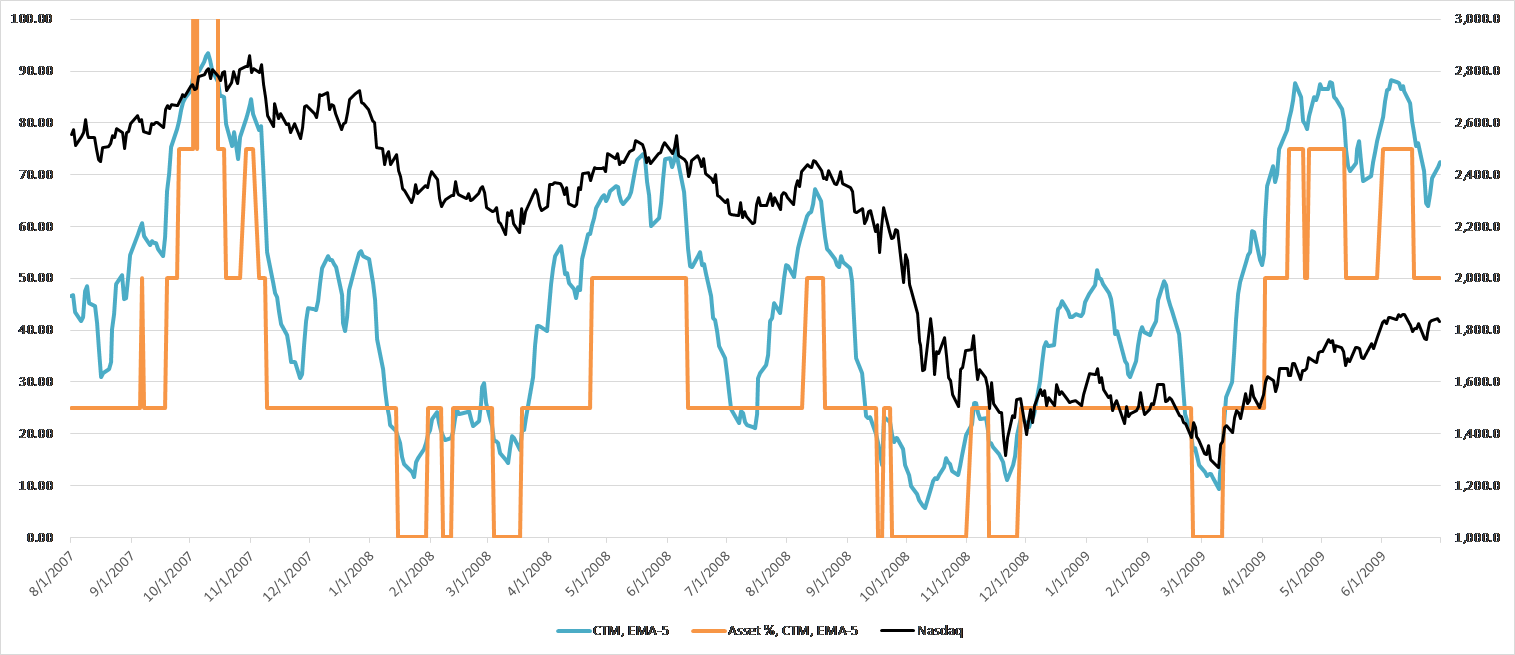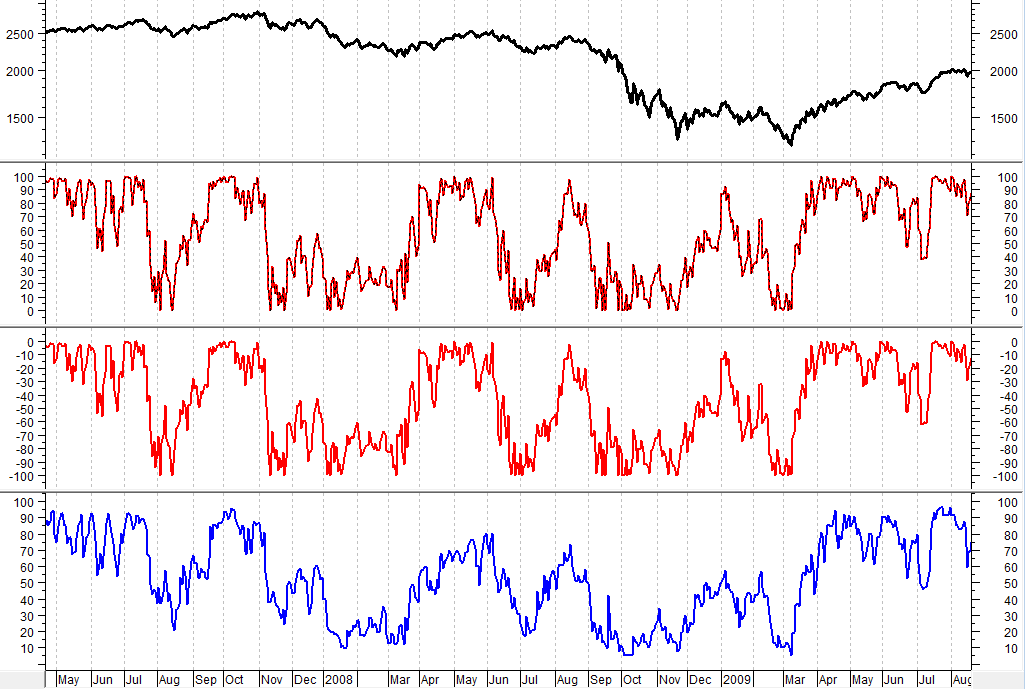 In the past two articles on Weight of the Evidence my goal was to show you how you can use Tushar Chande’s Chande Trend Meter (CTM) in a trend model. I stated previously that my digital weight of the evidence also provides levels that define buying parameters, stop loss percentages, and asset commitment amounts (see this article). In Weight of the Evidence -2 I showed that by exponentially smoothing CTM it greatly reduced its volatility and made it a bit more useable for a model. From a ChartSchool article on CTM, Tushar provides his levels that offer degrees of trendiness. They are reproduced in Table A not including the first column. Since my Weight of the Evidence also does the asset commitment levels, I added them to the table in the first column. I then created a digital signal to reflect the asset commitment levels. I did not experiment with using different percentages for the asset commitments. These were set using the 5-day exponentially smoothed CTM.
In the past two articles on Weight of the Evidence my goal was to show you how you can use Tushar Chande’s Chande Trend Meter (CTM) in a trend model. I stated previously that my digital weight of the evidence also provides levels that define buying parameters, stop loss percentages, and asset commitment amounts (see this article). In Weight of the Evidence -2 I showed that by exponentially smoothing CTM it greatly reduced its volatility and made it a bit more useable for a model. From a ChartSchool article on CTM, Tushar provides his levels that offer degrees of trendiness. They are reproduced in Table A not including the first column. Since my Weight of the Evidence also does the asset commitment levels, I added them to the table in the first column. I then created a digital signal to reflect the asset commitment levels. I did not experiment with using different percentages for the asset commitments. These were set using the 5-day exponentially smoothed CTM.
 Table A
Table A
Chart A shows the 5-day smoothed CTM in blue and the asset commitment digital in orange with the Nasdaq Composite in black. This chart shows the last bear market and recovery similar to that used in the earlier WoEv articles. I hope you will agree this greatly reduces the noise and removes most of the signals that would create too many whipsaws. These would be the times when CTM moves quickly from level to level or reverses through levels. Keep in mind that this digital is showing asset commitment levels based upon Table A. The tie with CTM is that those levels were determined by the various levels of CTM that Tushar set up.
 Chart A
Chart A
In the past two Weight of the Evidence articles I have mentioned often (too often?) the importance of using a model that is not totally based upon price. Chart B is my feeble attempt to show you why. Below is a chart of the Nasdaq Composite index in the top plot (black). Below that are 3 popular technical indicators which are all based upon price data and nothing else. With a little fiddling with the parameters, I was able to make all three of those different indicators look almost alike. So, do you want to only use price-based indicators? I hope not.
 Chart B
Chart B
Hopefully, you have enjoyed the series on Building a Rules-Based Trend Following Model and the Weight of the Evidence. Hopefully, I have convinced you to use various indicators in your Weight of the Evidence that are not all based upon price. For more information on ‘multicollinearity’ please see the ChartSchool piece I wrote many years ago for ChartSchool. And I want to mention this one more time: after building a model that you have confidence in; please find some way in which to help you maintain the discipline to follow it during periods of adversity. Without the discipline do not waste your time.
Dance with the Trend,
Greg Morris






